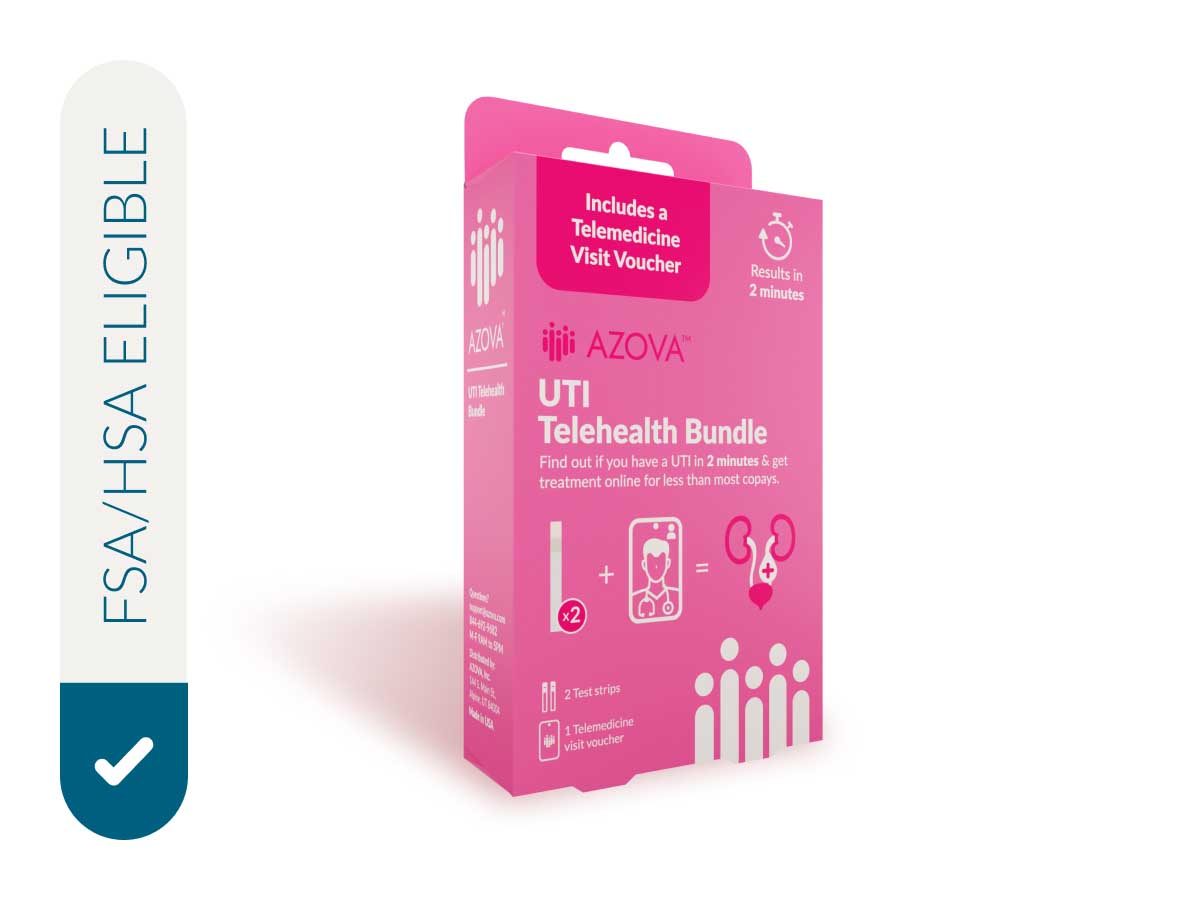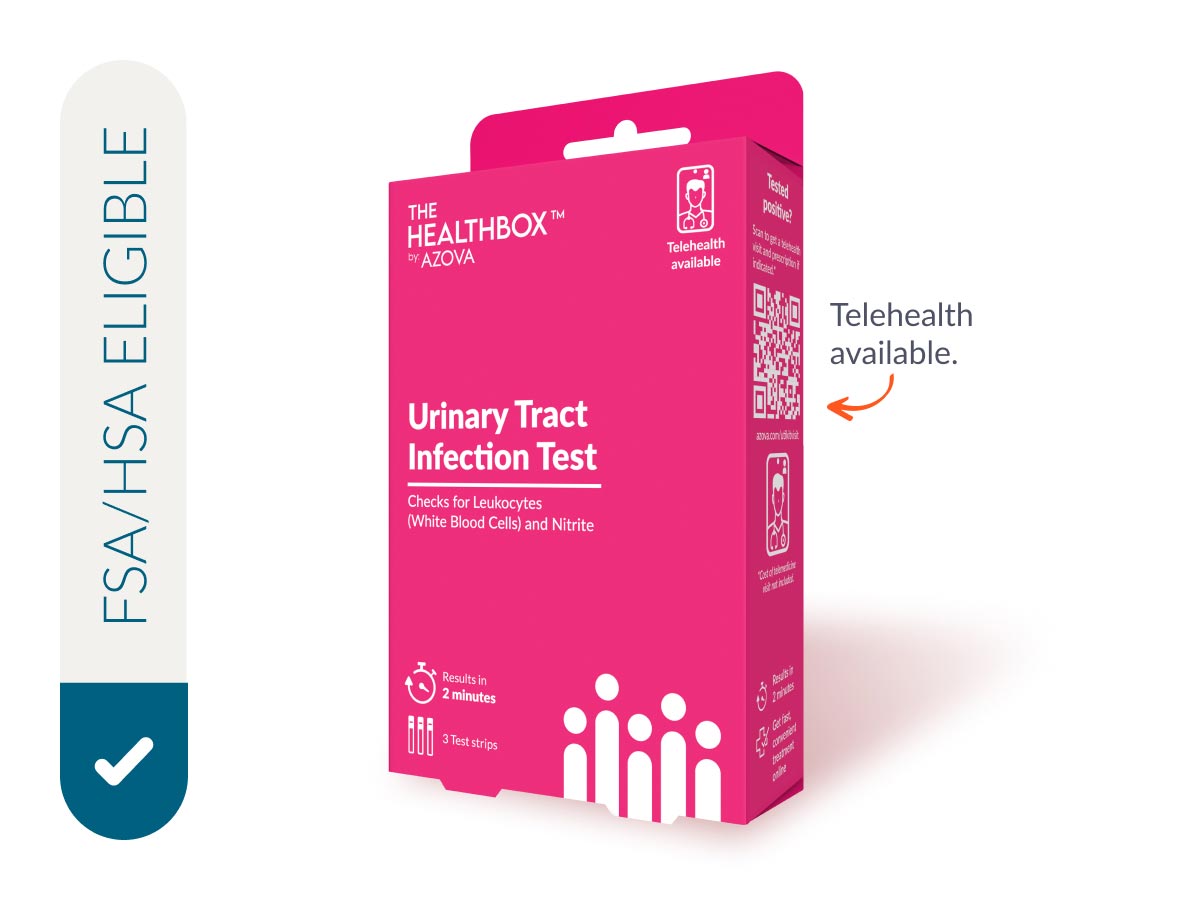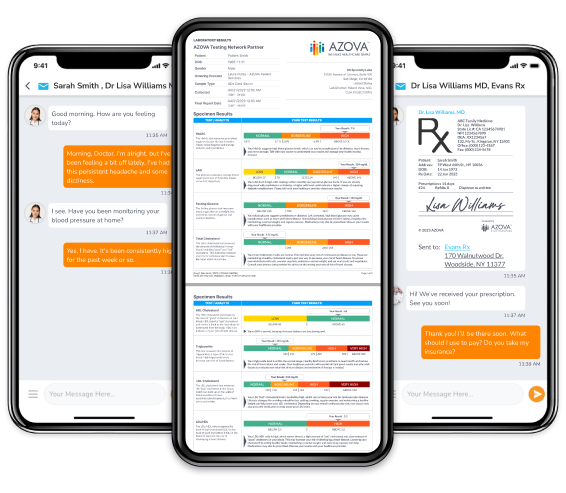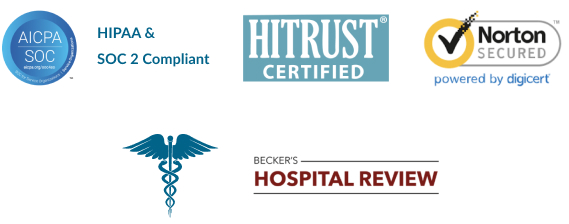Reliable urinary tract infection (UTI) treatment, just a click away.
Connect with a board-certified healthcare provider for UTI relief via a quick, secured video visit or messaging. Receive a diagnosis and treatment plan, all without leaving home..
Available in all 50 states.

Understanding urinary tract infections (UTIs)
A UTI is a common condition that can affect both adults and children. UTIs occur when bacteria enter the urinary tract and begin to multiply, causing discomfort and potential complications.
Types of UTIs:
- Cystitis: The most common type of UTI, affecting the bladder.
- Pyelonephritis: A more serious type of UTI that involves the kidneys.
- Urethritis: An infection of the urethra, the tube that carries urine out of the body.
UTIs are prevalent, affecting millions of people each year. Women are particularly susceptible, with about half experiencing at least one UTI in their lifetime.2 Men can also develop UTIs, although they are less common.4 Children, especially girls, are at risk, with UTIs affecting 1-2% of boys and 8% of girls by age 6.3
- UTI symptoms in adults
- UTI symptoms in children
- UTI causes in adults
- UTI causes in children
- UTI treatments for adults
- UTI treatments for children
UTI symptoms in adults
Urinary tract infections can cause a variety of symptoms, often depending on the severity of the infection. Common symptoms in adults include:1, 4
- Pain or burning sensation during urination
- Frequent urination
- Urinary urgency
- Cloudy or foul-smelling urine
- Pelvic pain or pressure
- Blood in the urine
- Fever
- Chills
- Fatigue
UTI symptoms in children
Children may experience similar urinary tract infection symptoms as adults, but they may also exhibit additional signs, such as:4
- Fever
- Irritability
- Poor feeding
- Vomiting
- Weight loss
- Bedwetting
- Pain in the back or side
UTI causes in adults
Urinary tract infections occur when bacteria enter the urinary tract and multiply. Several factors can increase the risk of UTIs, including anatomical differences, weakened immune systems, and certain medical conditions.
Several factors can contribute to the development of a UTI:1-2
- Birth control methods, such as diaphragms and spermicides, can increase the risk of UTIs.
- Low fluid intake can concentrate urine, making it easier for bacteria to grow.
- Holding in urine can lead to bacterial buildup in the bladder.
- Catheter use for extended periods can increase the risk of infection.
- Autoimmune diseases can make individuals more susceptible to UTIs.
- Blocked urine flow can lead to bacterial growth and UTIs.
UTI causes in children
Urinary tract infections in children are primarily caused by bacteria that enter the urinary tract. These bacteria can originate from various sources, including:3-4
- Gut: Bacteria like Escherichia coli (E. coli), Klebsiella, Proteus, Enterobacter, Citrobacter, Staphylococcus saprophyticus, and Enterococcus are commonly found in the digestive tract.
- Skin: Bacteria can also be present on the skin, especially around the genitals.
- Diapers: Studies suggest that super-absorbent diapers can increase the risk of UTIs in infant girls.
- Hygiene: Incorrect wiping practices, such as wiping from back to front, can transfer bacteria from the anus to the urethra.
UTI treatments for adults
Urinary tract infections are typically treated with antibiotics, which can effectively combat the bacteria causing the infection. The specific antibiotic prescribed will depend on factors such as the severity of the UTI, the type of bacteria involved, and your medical history.
Commonly prescribed antibiotics for UTIs include:1-2
- Trimethoprim and sulfamethoxazole (Bactrim, Bactrim DS)
- Fosfomycin (Monurol)
- Nitrofurantoin (Macrodantin, Macrobid, Furadantin)
- Cephalexin
- Ceftriaxone
In severe cases or for complicated UTIs, your healthcare provider may prescribe fluoroquinolone antibiotics, such as ciprofloxacin or levofloxacin. However, these are generally reserved for more complex situations, due to potential side effects.
When to seek medical attention
In-person care
If you are experiencing severe symptoms of a UTI, such as high fever, vomiting, difficulty urinating, or changes in behavior, it’s crucial to seek immediate medical attention. Additionally, if you notice any signs of complications, like blood in the urine, persistent pain, or changes in behavior, consult a healthcare professional immediately.
AZOVA Virtual Urgent Care
Virtual Urgent Care can be a convenient option for discussing symptoms, getting advice for mild UTI cases, follow-up appointments, or prescriptions, when needed.
UTI treatments for children
Commonly prescribed antibiotics for UTIs in children include:4
- Amoxicillin/clavulanate (Augmentin®)
- Cefixime (Suprax®)
- Cefpodoxime
- Cefprozil (Cefzil®)
- Cephalexin (Keflex®)
- Trimethoprim/sulfamethoxazole (Bactrim®, Septra®)
In severe cases or for complicated UTIs, your child’s healthcare provider may prescribe stronger antibiotics.
When to seek medical attention
In-person care
If your child is experiencing severe symptoms of a UTI, such as high fever, vomiting, difficulty urinating, or changes in behavior, it’s crucial to seek immediate medical attention. Additionally, if you notice any signs of complications, like blood in the urine, persistent pain, or changes in behavior, consult a healthcare professional immediately.
AZOVA Virtual Urgent Care
Virtual Urgent Care can be a convenient option for discussing symptoms, getting advice for mild UTI cases, follow-up appointments, or prescriptions, when needed.
Don’t suffer through burning sensation and frequent bathroom trips. Get treatment for UTIs today.
References
1Lights, V., Seales, J. L., Rice, C., & Henigsman, S. A. (2023, February 21). Urinary tract infection (UTI) symptoms, causes, and remedies. Healthline. https://www.healthline.com/health/urinary-tract-infection-adults#symptoms
2Medina, M., Castillo-Pino, E. (2019). An introduction to the epidemiology and burden of urinary tract infections. Therapeutic Advances in Urology, 11(1), doi: 10.1177/1756287219832172. https://www.ncbi.nlm.nih.gov/pmc/articles/PMC6502976/
3American Academy of Family Physicians. Donna J Fisher, MD et al (2024, January 29). Urinary Tract Infection. [eMedicine – Medscape]. https://emedicine.medscape.com/article/969643-overview?form=fpf
4American Academy of Family Physicians. Donna J Fisher, MD et al (2024, January 29). Pediatric Urinary Tract Infection Treatment & Management. [eMedicine – Medscape]. https://emedicine.medscape.com/article/969643-treatment?form=fpf
Need help or have questions?
Contact our AZOVA Customer Support team below
Live 24/7 chat
(quickest response)
You can chat with AZOVA’s Customer Support team for comprehensive support, including help with your account, testing, shipping, and results.
We typically respond within 5 minutes. Click the messaging icon on the lower right corner of the page to get started.





